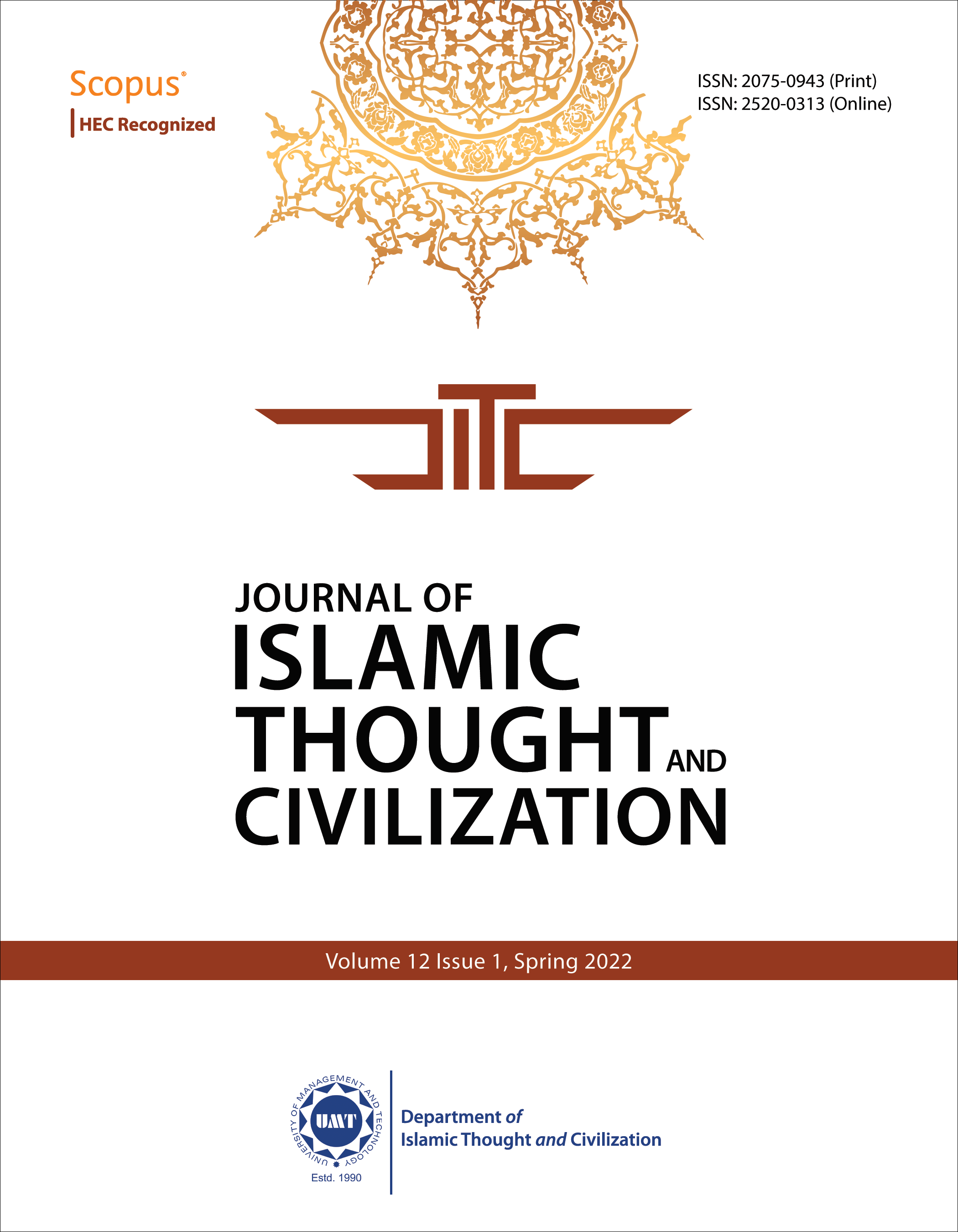Khwārazmshāhids Policy against Caliph Al-Nāsser Strategy to Regain Political Power of the Caliphate and Its Consequences in Irān
Abstract
 Abstract Views: 143
Abstract Views: 143
With the establishment of the Caliphate foundation, Iranians disappointed with accessing their own political aims through cooperating with the Caliphate, gradually started to reconstruct their kingdom regime and began a competition that somehow had a tough hostility towards Abbasids. In such a situation, the Abbasids, especially the Caliph al-Nasser, followed the process of recovering the Caliphate political hegemony, while and the Khwarizmi’s, in parallel, were planning a rigid dominance on Islamic world’s eastern regions including Baghdad, the capital of the Caliphate, to restrict its power in religious affairs. But after several battles between the armies of both sides, Sultan Muhammad Khwārazmshāh failed finally. This article attempts to recognize and analyze the motives and causes of the contrast that existed between these two power centers and their subsequent political and military consequences.
Keywords: Abbasid Caliphate, Al-Nāsser Ledin-Allah, Khwārazmshāh, Sultān Muhammad, the Ismāilia.
Downloads
References
Ansari Demashqi, Shams al-din ibn Abī Tālib. Nokhbat Al-Dahr fi Ajāeb al-bere wal-Bahr, Habib Tayyebiān (trans.), Tehran: Iran’s Art and Literature Academy [Farhangestān-e Adab va Honar-e Iran], 1978.
Bartol'd, Vasilii Vladimirovich. Caliph and Sultān, Syrus Izadī (trans.), Tehrān: Amir Kabir Publication, 1979.
Bayānī, Shīrīn, Religion and government in Mongol Iran Period 2nd edition, Tehrān: Markaz-e Nashr-e Dāneshgāhī, 1991.
Bosworth, Clifford Edmund. The New Islamic Dynasties, Feraidoun Badrahei (trans.), Tehrān: Iran’s Culture Foundation [Bonyād-e Farhang-e Iran], 1970.
Boyle, John Andrew. Cambridge History of Iran, Hassan Anousheh (trans.), Tehrān: Amir Kabir Publication, 1987.
Benāketī, Fakhr al-din Abū Suleiman Dāvood ibn Abī al-Fazl Muhammad. Rozat Ūlol al-Bāb fi Marefat al-Tawarīkh Walansāb, compiled by Jaʿafar Shoʿār, Tehran: The Association of Iranian Works and Figures (Anjoman-e Āsār va Mafākher), 1970.
Hassani Razi, Sayed Mortezā ibn Dāʿeī. Tabserat al- Awām fi Marefat Anām, 2nd edition, Abbās Iqbāl (ed.), Tehran: Asātir Publication, 1985.
Hodgson, Marshall Goodwin Simms. The Order of Assassins; the Struggle of the Early Nizāri Ismāilis Against the Islamic Word, Fraidoun Badra'ei (trans.), Tabriz: Tehrān Bookstore, 2nd edition, 1985.
Ibn Abī al-Fidā, Imād al-din Ismāiil. Almokhtasar fi al-Akhbār al-Bashar, Egypt: al-Hussainiya Publications, n.d.
Ibn Athir, Izz al-din Ali Ibn Muhammad. Al- Kamel fi al - Tarikh, Beirut: Dār Sāder, 1966.
Ibn Eskandar, Unsor Abol-Maʿālī Keikāwous. Ghābǖsnameh, Gholam Hussein Yousefi (ed.), Tehrān: The Corporation of Books Translation and Publication, 1966.
Ibn al-Sāei al-Khāzin, AbīTālib Ali bin Anjab Tāj al-din. Almokhtasar fi Onwan Al-tawārīkh wa Oǖn Al-Sīar, researched by Mustafā Javād, Baghdād: the Syriac and Catholic Publication, 1934.
Ibn Bī Bī, Nasser al-Din Hussein ibn Muhammad. Saljǖghnāmeh yā Akhbāre Salājeghaye Rome, Tabriz: Tehrān Bookstore, 1971.
Ibn Jūbair, Muhammad Ibn Ahmad. Travelogue, Parviz Atābaki (trans.), Tehrān: Astān-e Qods-e Razawi, 1991.
Ibn Howqal, Muhammad. Sūrat al-Arz, Jafar Shoār (trans.), Tehrān: Iran’s Culture Foundation [Bonyād-e Farhang-e Iran], 1966.
Ibn al-Taqtaqā. Tārīkhe Fakhrī, Muhammad Wahid Golpāyegāni (trans.), 3rd edition, Tehran: Scientific and Cultural Publication (Elmī va Farhangi), 1988.
Ibn Kathir, Albedāyeh wa Alnehāyeh. Egypt: al-Saādat Publication, n.d.
Istakhri, Ibrahim bin Muhammad. Masālek wa Mamālek, 3rd edition, compiled by Iraj Afshār, Tehrān: Scientific and Cultural Publication (Elmī va Farhangi), 1989.
Joweinī, Atāmalek Ibn Bahā al-dīn. Tārikhe Jehāngoshā, Leiden: 1916.
Jouzjānī, Minhāj Serāj, Tabāghāte Nāserī, 3rd edition. Kabul: no publisher, 1916.
Kāshāni, Zobdato. Al-Tawārīkh 2nd edition, by the efforts of Muhammad Taghi Dānesh Pazhouh, Tehrān: The Institute of Cultural Studies and Researches, 1987.
Kāshefi Sabzewāri, Mowlānā Hussein. Fotūwatnāmeh Soltānī, by the efforts of Muhammad Jafar Mahjoub, Tehrān: Iran’s Culture Foundation, 1951.
Lewis, Bernard. The Origin of Ismailism, Yaghūb Āzhand (trans.), Tehrān: Maowlā, 1984.
Al-Katbī, Muhammad Ibn Shāker. Fawāt Al-wafayāt wa Zail Alaihā, a research by Dr. Ehsān Abbās, Beirut: Dār al-Thiqāfeh, n.d.
Mirkhānd, Rauzat al-Safā, Tehrān: Markazī, Khayām, Pirouz, 1960.
Modarresī Zanjāni, Muhammad. (as his efforts), Majma Al-tawārīkh Al-soltānīyeh, Tehrān: Ettlāāt Publication, 1985.
Moqaddasī, Abū Abdullah bin Ahmad, Ahsan Al-taghāsīm fī Marefat Al- Aghālīm, Ali Naghi Monzawi (trans.), Tehrān: Iranian Authors and Translators’ Company, 1982.
Mostawfī, Hamdūllāh. Tārīkhe Gozīdeh, Tehrān: Amir Kabir Publication, 1960.
Nakhjawānī, Hindushah Ibn Abdullah Sāhebī. Tajārob Al-Salaf, Tehrān: Tahūrī Publication, 1965.
Qazwini, Muhammad Ibn Zakaryyā. Āsār Al-Belād wa Akhbār Al-Belād, Muhammad ibn Abdurrahmān (trans.), corrected by Muhammad Shāhmorādī, Tehran: Tehrān University Press, 1994.
Shabānkāraei, Muhammad Ibn Ali. Majma Al-Ansāb, Tehrān: Amir Kabir Publication, 1984.
Saeed al-Sheikh, Sabāh Ibrahim. Guilds in the Abbasid Period, Hādī Ālem Zādeh (trans.), Tehrān: Markaz-e Nashr-e Dāneshgāhī, 1983.
Spuler, Bertold. The Muslim World, Qamar Āryān (trans.), Tehrān: Amir Kabir Publication, 1966.
Al-Safdī, Salāh al-Din Khalil Ibn Aibik. Alwāfī Belwafayāt, Istānbul: The Publication of Science Ministry, n.d.
Al-Sūyoutī, Jalāluddin, Tārī Al-Kholafā, researched by Muhammad Mohyeddin Abdolhamid, 1959.
Zeidarī Nasawī, Muhammad. Sīrat aL-Soltān Jalāl al-dīn, 3rd edition, Muhammad Ali Nāseh (trans.), by the efforts of Khalil Khatīb Rahbar, Tehrān: Sadī Publication, 1987.
Qafasughli, Ibrāhi., History of Khwarezmshahids Government, Dāwood Esfahāniyān (trans.), Tehran: Gostardeh Publication, 1988.
Copyright (c) 2022 Siavash Yari

This work is licensed under a Creative Commons Attribution 4.0 International License.

This work is licensed under a Creative Commons Attribution 4.0 International License. Authors retain copyright and grant the journal right of first publication with the work simultaneously licensed under a Creative Commons Attribution (CC-BY) 4.0 License that allows others to share the work with an acknowledgement of the work’s authorship and initial publication in this journal.








